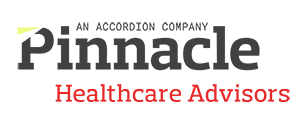 By Marci Mollman & Liz Hendricks
By Marci Mollman & Liz Hendricks
As the cost of healthcare increasingly shifts to patients, revenue cycle leaders and staff in healthcare organizations need to be ready to handle the challenges and responsibilities of this new reality in healthcare. A range of factors is driving the cost shift to patients, including legislative changes and rising healthcare costs. As we delve into the key considerations and actions that revenue cycle leaders and staff need to take, we will also explore recent research findings to provide a comprehensive understanding of the evolving landscape.
Driving Factors
- Private Health Insurance Prevalence: According to the 2021 U.S. census, private health insurance is more prevalent than public coverage, with employer-based health insurance comprising more than 54% of health insurance coverage. This is particularly relevant considering current inflation rates, which have led employers to consider shifting employees to High Deductible Health Plans (HDHPs) to control healthcare costs. However, it is crucial to acknowledge that HDHPs have raised concerns related to healthcare outcomes and accessibility.
- HSA Limits on the Rise: The IRS has increased Health Spending Account (HSA) limits for 2024. Over the past five years, HSA limits have risen by 19%, with a notable 7% increase from 2023 to 2024. This increase reflects the growing importance of HSAs in healthcare financing and necessitates a better understanding of their implications for patients and providers.
- Affordability Challenges: A 2022 Kaiser Family Foundation Issue Brief1 highlights the struggle many Americans face when it comes to affording healthcare. Half of adults find it difficult to cover healthcare costs, and a significant portion worry about meeting their deductibles before insurance coverage kicks in. The inability to manage unexpected medical bills poses a substantial barrier to receiving necessary care.
Pressures on Healthcare Providers
- Legislative Requirements: The No Surprises Act prohibits surprise billing for patients with private insurance, changing the billing landscape significantly. Government agencies are also reviewing criteria for charity care, necessitating better financial assistance programs.
- Addressing Patient Concerns: Patients are pressuring healthcare providers to address healthcare costs. Patients are increasingly comparison-shopping for care and sharing their medical bills and experiences on social media, which can negatively impact a healthcare provider’s reputation.
Proposed Actions for Healthcare Providers
- Review Policies and Procedures: Regardless of whether registration and billing are insourced or outsourced, it is crucial to ensure that all policies and procedures align with providing a positive patient experience. Clear communication and transparency are key.
- Design Proactive Communication: Healthcare providers should proactively communicate with patients, especially before costly visits. Providers should review their process around financial conversations to ensure they are following best practices at the different points of entry. This is not a comprehensive list but can include: inquiring about any changes in insurance as some patients may have shifted to HDHPs, scripting and processes for talking to patients about their financial situation, and developing a policy for how and when payment is requested. This can help avoid unexpected costs for patients and enhance patient satisfaction. Developing proactive communication with patients can also increase employee satisfaction by empowering them to do their job with lower instances of negative patient interaction. Always being mindful of the patient’s financial health can help the patient focus on their physical health.
- Develop Good Faith Cost Estimates: Think about how you are running your estimates today. Is it the most effective way for you and your patients? Regardless of whether you are using your EMR for estimates or an add-on solution, be sure you are evaluating the estimates for accuracy. Before delivering any services, provide patients with cost estimates for all healthcare orders, including add-on procedures such as labs. Even if a service is out of network, including it in cost estimates is essential for transparency and patient satisfaction. Ensure that patients fully understand their financial responsibilities along with talking to them about how they will pay (e.g., payment plan, financial assistance, etc.). For more information on the factors impacting the accuracy of cost estimation see 3 Factors that Reduce the Accuracy of Your Hospital’s Cost Estimation.
- Ensure Legal Compliance: Under the No Surprises Act, out-of-network providers of emergency care can only bill the amount of in-network cost sharing. Healthcare providers should remind patients to review the Explanation of Benefits (EOB) from their insurance provider to verify that any out-of-network provider bills match their in-network cost sharing amounts. Depending on your eligibility vendor and/or website response, this could be something you can counsel the patient on prior to discharge.
- Provide Training & Work Aids: Equip staff with the necessary resources to engage in cost conversations with patients. Staff should have access to scripting, scenario-based learning and understand the tools that they will use daily to improve the patient experience. Staff need to have conversations with patients before costly appointments to gauge their level of cost concerns and awareness of financial assistance resources and have staff follow-up to ensure the account is financially secured. This conversation should take place in a pre-registration workflow. Providers should also ensure patients understand their financial responsibilities for non-emergency care, such as labs, procedures, and prescriptions. Additionally, doctors should be prepared to discuss the timing of non-urgent procedures and explore less costly alternatives for prescriptions.
As the healthcare landscape continues to evolve, revenue cycle leaders and staff play a pivotal role in ensuring that patients can navigate the financial aspects of their care. The increasing burden of healthcare costs on patients necessitates a proactive approach, clear communication, and compliance with evolving regulations. By following these guidelines and staying informed about legislative changes, healthcare providers can better prepare patients for the challenges of paying for healthcare in this shifting environment.
At PinnacleHCA, we regularly work with our clients to prepare for and respond to these pressures. If you would like to learn more about our work with clients, please reach out to Marci Mollman at mmollman@pinnaclehca.com and let’s discuss.



